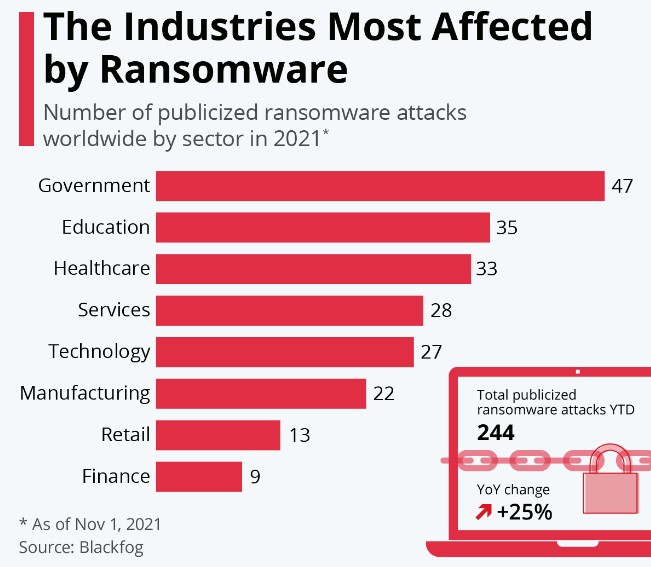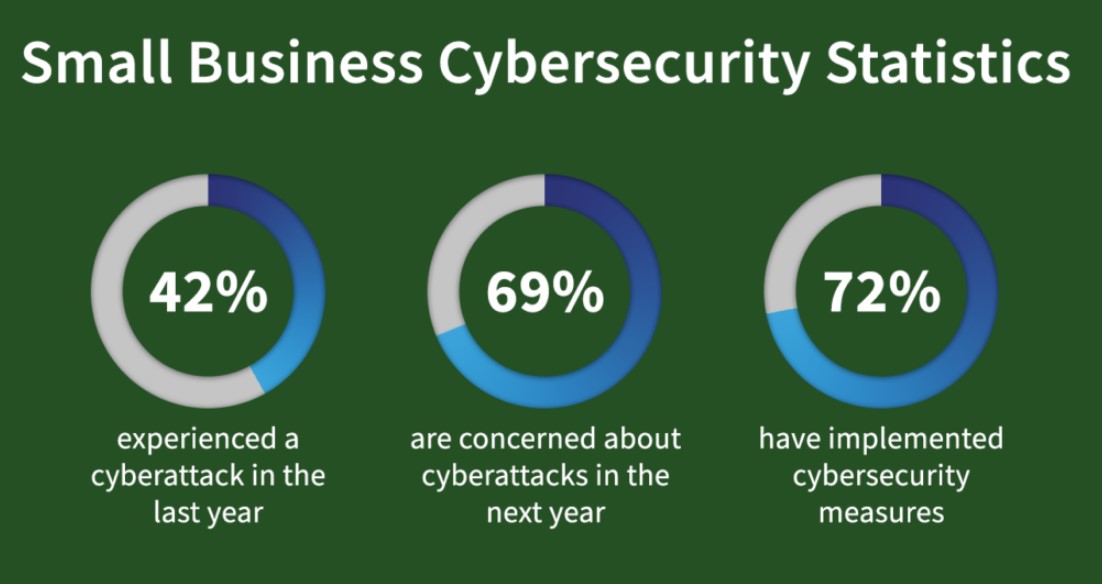The number of cybersecurity attacks are skyrocketing, and so are the financial losses incurred along the way. Add to that the growing complexity of cybersecurity attacks and their ability to bypass cybersecurity defenses without getting detected, and you can see why they have become a serious problem for businesses.
Sadly, this trend is visible across the board. Whether you are a small business with few employees or a large-scale enterprise, you could become the next target of cyberattackers. However, there are certain industries which are more prone to cybersecurity attacks than others.
7 Industries That Are At A Higher Risk of Cybersecurity Attacks
Here are seven industries that are more prone to cybersecurity attacks as compared to other industries.
1. Finance
According to the Vernois Data Risk Report 2021, financial service providers have 449,855 exposed sensitive files, which is 300,000 more than the average for other industries. This puts the finance industry at the top of our list. What’s even more alarming is the fact that more than 38,000 of those files are accessible to everyone. Not to mention, businesses that operate in the financial sector take around 233 days to detect and fix a data breach incident. This shoots the average cost of data breach for financial services to a whopping $5.85 million. With a growing reliance on mobile banking and online transactions, this trend will only continue. Financial services need to rethink their cybersecurity strategy and take concrete steps to protect the data of their customers.
2. Healthcare
Yes, the finance industry fared the worst when it comes to the number of exposed files but healthcare tops the list in terms of cost of data breach. According to the cost of data breach report 2022, the average cost of healthcare data breach amounted to $10.1 million. Furthermore, more than 90% of healthcare providers have suffered at least one security breach within the last three years.
COVID-19 fueled this trend as the number of cybersecurity attacks targeting healthcare businesses almost doubled in the last two years. Healthcare organizations should take regular backup of their sensitive data to safeguard themselves from ransomware attacks and increase awareness amongst employees to minimize the risk of phishing attacks, since these are the two most common types of attacks targeting healthcare organizations.

3. Energy
Critical infrastructure, such as power plants and nuclear plants, has recently become a favorite target for cyberattackers. We have seen a flurry of attacks targeting pipelines and energy generation power plants as well as other critical infrastructure which can cripple your entire operations, as we previously witnessed with the Colonial Pipeline incident.
State sponsored armies of cyberattackers will continue to launch cybersecurity attacks against critical installations in the future. Power Plant administrators need to find new ways to restore operations from different facilities if one facility becomes a target of a cybersecurity attack.
4. Education
Another industry that has recently grabbed the attention of hackers is education institutes. Many schools, colleges and universities came under ransomware attacks while others had a brush with trojans, spyware and adware. Previously, attackers used to rely on adware and spam but now they have shifted their focus to ransomware as a weapon against educational institutions.
Institutions relying on education systems are more vulnerable as these attacks either shut their systems down or bring it down to its knees, forcing schools to close their operations temporarily. Even a small delay can negatively impact millions of students and could put their academics at risk.

5. Government
Even though government agencies prove to be the hardest target for cyberattackers, they are also the most lucrative. These government agencies have access to a treasure trove of data of millions of citizens, which means that if the hacker somehow penetrates through their security defenses, this data can potentially fall into the wrong hands. This not only puts the citizens at risk but also raises a huge question mark on the inability of local and federal governments to protect the sensitive data of their wards.
6. Small Businesses
Surprised to see small businesses on this list? You are not alone. Most people think that cyberattacks usually target large scale enterprises who have millions of records in their databases. Sadly, that is not true. In fact, 43% of all cyberattacks are targeted towards small businesses.

Most of these attacks are targeted phishing attacks, but cybercriminals also launch attacks against third party vendors to gain access to small business data. The third most common type is malware which is either injected in the code or launched to gain access to sensitive data. Their goal is to gain back door access to the data of your employees as well as customers.
7. Retail
According to Sophos, the retail and education sectors are two of the prime targets of ransomware attacks. 44% of retail organizations experienced a ransomware attack at least once, in addition to credential phishing and malware attacks.
Combine that with the rise of online shopping and the growing number of online payment methods, and both online and offline retailers are at risk. The bigger the retailer, the larger its attack surface and the easier it is for attackers to target it. Retailers must invest heavily in training their employees and follow cybersecurity best practices to protect customer data.
Which industry is most vulnerable to cybersecurity attacks in your opinion? Share it with us in the comments section below.





Add comment